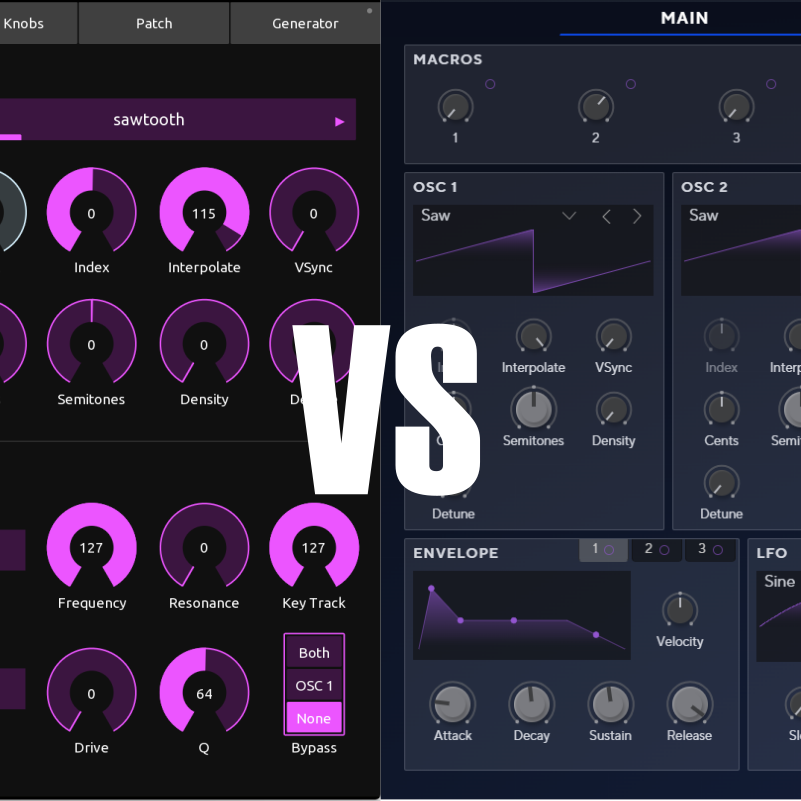Of course, this cannot be an objective comparison, as I wrote NC editor specifically because I was dissatisfied with Components. But I would still like to try to point out a few advantages and disadvantages of the two solutions. In order not to make the blog article too long, I will look at individual aspects in different posts. Today we start with
The Interface
In NC Editor, the parameters are spread over 5 tabs, whereas Components only requires 3 tabs. This means that with Components you have to switch between tabs less often and at the same time have access to more parameters. On the other hand, the tabs themselves are a little cramped and the controls are very small, which makes them more difficult to use. In the browser version, you can use the zoom function to enlarge the user interface (this does not seem to be possible in the standalone version). However, even then the individual controls remain significantly smaller than in NC Editor. Here, the controls are large enough to be used comfortably even on tablets and touch screens. They also scale seamlessly with the size of the window so that they are easy to use even when the window is not full screen.
Graphical representation
Components demonstrates a real strength in the graphical representation and operability of curves. Waveforms, filters, envelopes, LFOs and equalizers are all displayed graphically. Where it makes sense, the parameters can also be changed directly in the graphic. That's powerful! Unfortunately, these features cannot be implemented in NC Editor, so this point clearly goes to Components.
Tab switching
With Components, the developers have decided to animate the change of a tab. This seems stylish and appealing at first glance, but after a while it gets a bit annoying that you have to wait approx. 0.8 seconds for the tab to load each time you change. While this doesn't seem like a big deal on paper, the little stumble can throw you off, especially if you're switching back and forth a lot (like when programming modulators).
Controls
Both Components and NC Editor rely on tried-and-tested controls: both have knobs, faders and buttons, and a double-click resets to the default value. However, there are differences when it comes to selection elements: While Components uses drop-down menus, NC Editor relies on sliders. Dropdowns have the one advantage that you can see what is on offer when you expand them.
Sliders, on the other hand, are much more direct: you need far fewer clicks to change a parameter and you can even scroll through the values in real time. This is a huge advantage when it comes to hearing the differences between individual values.
In addition, the NC Editor has single-step buttons for sliders and a precision mode for faders (slide on the right edge of the fader), which allows you to quickly set the desired value.
Bottom line
The Components interface is more stylish and scores points with visual displays and a higher density of simultaneously available parameters.
The NC editor is straightforward and more responsive (sliders, fast tab switching). In addition, the controls are large and ergonomic, making them easy to use even on touch displays.
I think, Components is absolutely sufficient for occasional adjustments.
However, if you regularly work on your patches or want to change parameters in real time in shows, NC Editor is the better choice.

